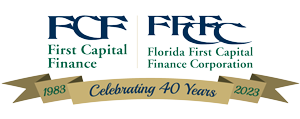- Loan Programs
- News & Media
- Our Story
- Contact Us
SBA 504 Loan Interest Rates
January 2026
25-Year Fixed Rate Standard:
5.85%
25-Year Fixed Rate Refinance:
5.85%
20-Year Fixed Rate Standard:
5.91%
20-Year Fixed Rate Refinance:
5.91%
10-Year Fixed Rate Standard:
5.67%
10-Year Fixed Rate Refinance:
5.67%
Official monthly SBA 504 effective interest rate tables can be found at Eagle Compliance LLC. 25- and 20-year term loans fund every month; 10-year term loans fund every other month. Effective interest rates are inclusive of servicing fees, which are subject to credit risk of the applicant.

 504 loan rates still, however, remain very favorable for small business borrowers. But what about going forward? Frank Keane, fiscal and selling agent for Eagle Compliance, LLC - the entity responsible for marketing, pricing and selling 504 funding securities - provides insight.
504 loan rates still, however, remain very favorable for small business borrowers. But what about going forward? Frank Keane, fiscal and selling agent for Eagle Compliance, LLC - the entity responsible for marketing, pricing and selling 504 funding securities - provides insight.